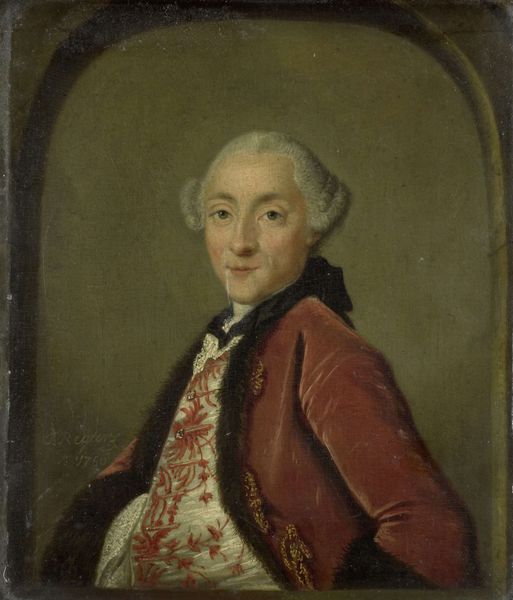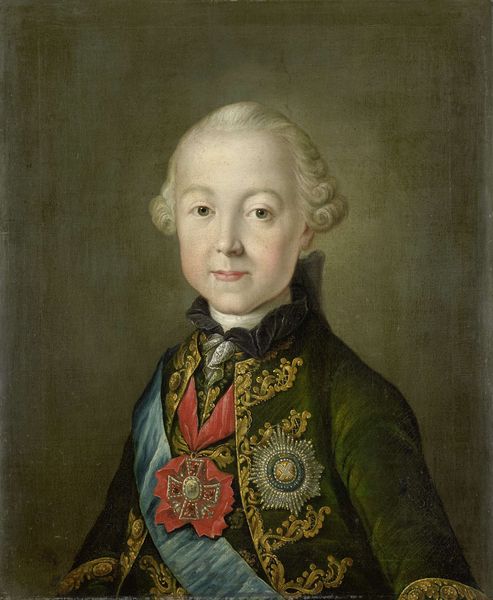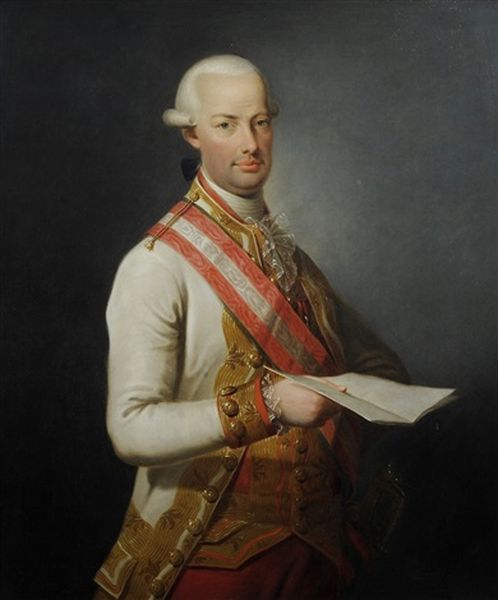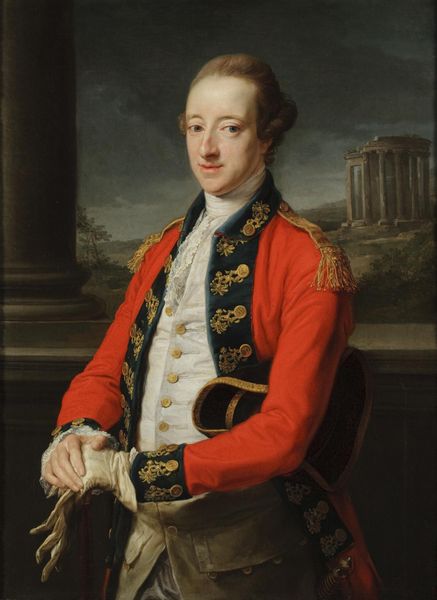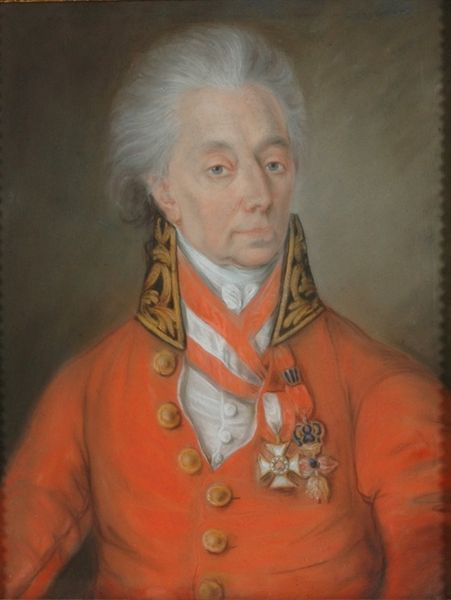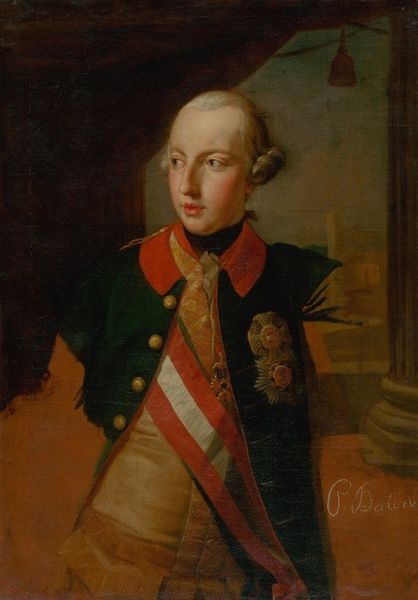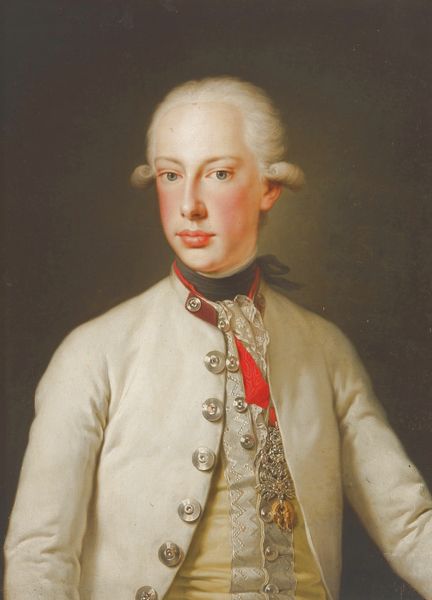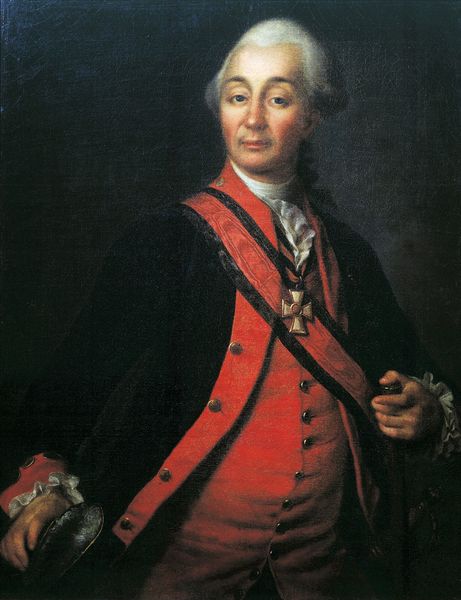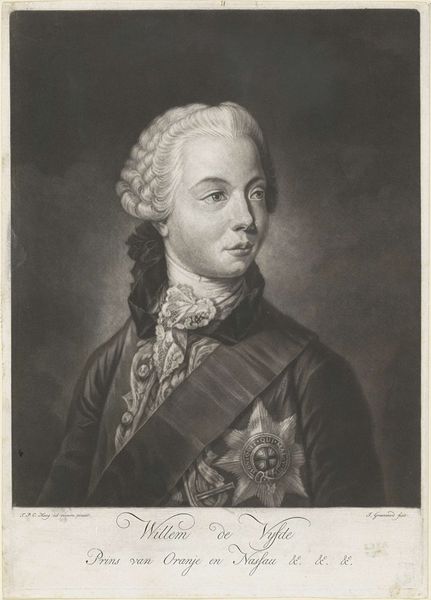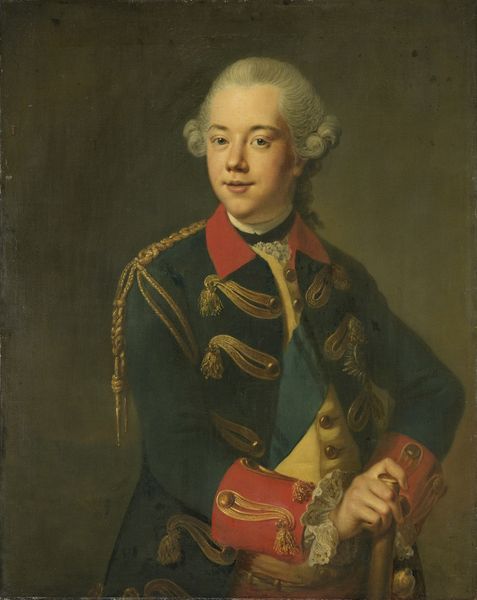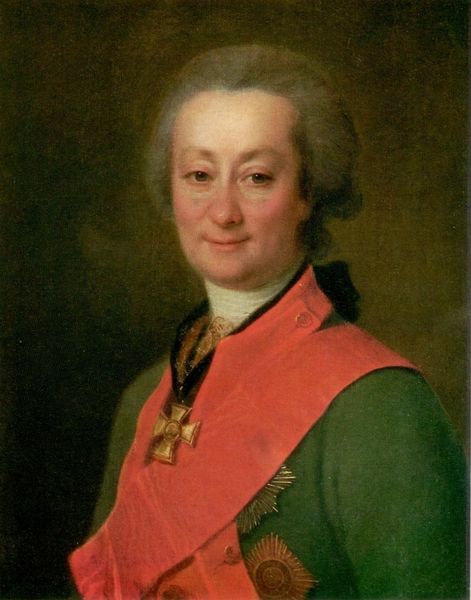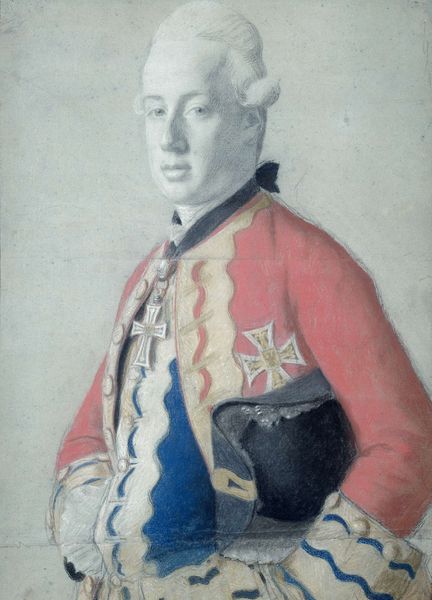
painting, oil-paint
#
portrait
#
painting
#
oil-paint
#
figuration
#
rococo
Copyright: Public domain
Editor: Here we have Carl-Ludwig Johann Christineck’s "Portrait of Prince G.G. Orlov," painted in 1768 using oil paint. It feels very formal, almost stuffy, with the subject gazing out as if slightly annoyed. What social forces might be at play here? Curator: Indeed. The apparent "stuffiness" is precisely where the work gains its meaning. Painted during the reign of Catherine the Great, consider the gender politics at play. Grigory Orlov was, at one point, her lover and confidant. The portrait's display of power—the medals, the elaborate attire—speaks not only to Orlov's status but to the construction of masculinity within a court dominated by a female ruler. How do you think Orlov’s visual representation reinforces or challenges Catherine’s power? Editor: I hadn't considered the impact of a female ruler on these visual representations. The ornate clothing and medals could be overcompensating for something? Perhaps projecting an image of undeniable power in the face of Catherine's authority. Curator: Exactly! The portrait is more than just a depiction of an individual; it's a political statement wrapped in the guise of aristocratic elegance. The Rococo style, often associated with femininity and frivolity, takes on a different weight when employed to depict a male figure vying for influence. Now, looking at the gaze, who do you think holds more power, the portrayed or the artist? Editor: That’s a tricky question! The sitter holds societal power, but the artist has control over representation… the subject looks very subtly down his nose at us, but it feels somehow defensive. Curator: Precisely. And Christineck as the portrait artist, is then a mediator, complicit in these games of power, both reflecting and shaping societal perceptions. We're left to decode not just the sitter, but the complex choreography of status being performed for us. Editor: That's a really fascinating perspective. I definitely see the painting differently now, much more than just a fancy portrait! Curator: Precisely. By situating art within socio-historical and theoretical frameworks, we can extract meaning that may not be immediately obvious, fostering a dialogue between past and present.
Comments
No comments
Be the first to comment and join the conversation on the ultimate creative platform.

